SHOWER WALL PANEL BUYING GUIDE
Is your bathroom in desperate need of renovation? Are you looking for shower walls that are reasonably affordable, low-maintenance, and easy to install?
That combination might sound too good to be true. But new wall panels for your shower make it easier than ever to give your bathroom a facelift.
WHAT ARE BATHROOM SHOWER WALL PANELS?
Picture a classic shower design. Do you see tiled walls? Tiles are an excellent choice for shower walls, but they do have downsides. Namely, grout can be a pain to scrub, and it sometimes grows mold, too. Grout joints also need to be regularly resealed.
However, in recent years, wall panels have emerged as both economic and stylish alternatives to tile. These are panels that can be glued over tile or over your existing bathroom walls. You can even install some of them yourself!
Are panels the best choice for you? And if so, which type should you choose?
TYPES OF BATHROOM SHOWER WALL PANELS
Once you’ve decided to go forward with getting panels, you’ll need to take a look at the various types of shower wall panels available. There’s a wider variety of materials than you might think, with something for every budget.
FIBERGLASS-REINFORCED PLASTIC (FRP)
If you’re looking for a lightweight, fast installation that’s easy on your wallet, FRP is the way to go. This material is under a tenth of an inch in thickness, so it’s incredibly light. The downside is that the color fades relatively quickly compared to other materials. It also scratches easily.
POLYVINYL CHLORIDE (PVC)
PVC is a versatile material that can be used to create both simple and elaborate wall panels. You can find rigid and flexible PVC, so it’s ideal for showers with curved walls.
For budget-friendly solutions, you’ll find flat, straightforward panels. For more luxury and a slightly higher price point, you can also find textured PVC panels that look a lot like natural tile or stone. Generally speaking, you’ll need to have drywall or tile in place under PVC panels.
LAMINATED MEDIUM-DENSITY FIBERBOARD (MDF)
These panels are among the heaviest, but they’re also high-quality. They have an outer vinyl coating over a dense, pressed board. Compared to FRP and PVC, MDF panels look luxurious.
They often have a higher price point, but also offer easy installation. MDF panels click together thanks to tongue and groove construction. If you’ve ever installed laminate floorboards, these panels work in much the same way.
ACRYLIC
Acrylic panels offer you a great balance of looks and cost. Most have a glossy finish that gives your shower a high-end look. Unlike FRP, white acrylic panels won’t yellow over time. They’re quick and easy to cut and install, so acrylic panels are a great choice if you’re wanting to do a quick remodel that will hold up for a long time.
SOLID SURFACE
If you like the look of marble (and similar stone) but not the high price tag, solid surface is a great choice. This material combines crushed stone, resin, and pigments to create surprisingly realistic panels in many different finishes. Solid surface material that looks like marble is often called “cultured marble.”
Solid surface panels are usually less than half an inch thick. However, depending on the amount of crushed stone and resin used, they can be quite heavy.
NATURAL STONE
Natural stone is probably the most luxurious shower wall material. You can use a wide range of stone types, but the most common ones are slate, marble, and granite. Natural stone looks beautiful and won’t fade or wear down.
However, as you may have guessed, natural stone is more expensive than other available materials. It can be trickier to cut and requires professional installation, so labor costs alone can be fairly high.
SHOWER WALL PANELS & SHOWER BASES
Ensuring that your shower panels are the appropriate width for your base is important, but you have the flexibility to mix and match materials according to your preference. Some people prefer using an acrylic or fiberglass base regardless of what the walls look like. But if you prefer, you can select a matching base. To learn more about shower bases, see our buying guide here.
SHOWER WALL PANELS & SHOWER DOORS
Single-panel doors tend to be among the easiest to install here. However, they usually are not more than 36 inches wide. If your paneled shower has a larger opening for the door, you might want to install a door that’s built into a panel.
Most shower doors are glass, though there are a few broad categories to choose from:
- Sliding doors: good for smaller bathrooms
- Pivot doors: good for narrow shower openings
- Round doors: good for corner shower stalls
- Neo-angle doors: good for neo-angle corner showers
The right door can make your shower easy to use, but the wrong door can cause considerable frustration! If you’re in doubt, reach out to an experienced professional for guidance or see our Shower Door Buying Guide here.
In lieu of a shower door, a shower rod with a curtain can be used, however be sure to use a weighted curtain to help keep the water within the shower basin.
PROS & CONS OF BATHROOM SHOWER WALL PANELS
Choosing a material for your shower walls is a weightier decision than you might think. After all, if you find you don’t like the walls you chose, removing and replacing them is an arduous (and impractical) process.
Before you settle on panels or select tile instead, here are some of the main pros and cons of paneled walls to consider:
PROS:
- There are many types of shower wall panels, so there’s something for every budget
- They are resistant to mold, so you don’t need to scrub them like tile grout
- Unless you choose a luxurious material, they’re usually more affordable than tile
- Installation is usually quick, and you can do some installations yourself
- You can choose panels that look like wood or stone but are much more affordable
- Some panel types use tongue and groove construction for extra-easy installation
CONS:
- More costly materials can last a lifetime, but economy panels may need to be replaced in 10 years or less
- Most panels aren’t flexible, making installation on curved walls a challenge
- Some panels require costly professional installation
- High-end materials like natural stone are often much more expensive than tile
OTHER THINGS TO CONSIDER BEFORE PURCHASING A SHOWER WALL PANEL
Choosing your shower wall material is certainly important, but it’s not the only factor you should think about. Here are a few other considerations.
INSTALLATION
There are a few different types of shower wall panel installation methods, including:
Adhesive installation: This involves using an adhesive to secure the panels to the wall. This is a popular method because it is relatively easy to do and does not require any special tools.
Mechanical fixing: This involves using screws or clips to secure the panels to the wall. This method is often used when installing heavier panels or when the walls are uneven.
Interlocking installation: This involves using panels that have a tongue-and-groove system that allows them to interlock with each other. This method is often used when installing panels without any visible seams.
Magnetic installation: This involves using panels that have magnetic strips on the back, which allows them to attach to metal framing installed on the wall. This method is often used when installing panels in a commercial setting or when a quick installation is needed.
The type of installation method that is best for you will depend on a number of factors, including the type of panel you are using, the condition of your walls, and your own level of DIY experience. It's important to follow the manufacturer's instructions carefully and to consult with a professional if you are unsure about the best method for your specific situation.
SIZING
You might already have an idea of how to choose the best size tile for shower walls. But choosing panel sizes is a whole different world. If you have an existing shower, you’ll need to measure your walls to get a sense of what size panels will work.
Most standard panels come in widths of 36 inches, 48 inches, and 60 inches. The most common heights are 59 inches, 72 inches, and 96 inches. If you have an unusually shaped shower, most panel types can also be cut down to size.
FREQUENTLY ASKED QUESTIONS (FAQ)
Can Accessories Be Added to a Shower Wall Panel?
Yes — some panels come with built-in accessories, and others allow you to customize your panels with only the accessories you want. One of the best things to include is a recessed niche. A niche works as a shelf for soaps and shampoos, and it looks much nicer than suction-cup shower caddies!
Even if you don’t think you need a shower grab bar, it can be a good idea to get one. And if you’d like your shower to be more accessible (or just want to be able to sit down while showering), some manufacturers can add fold-down benches and shower chairs.
How Do You Measure Shower Enclosure for a Shower Wall Panel?
Measuring a shower enclosure for shower wall panels involves taking accurate measurements of the shower walls, which will help ensure that the panels fit properly and look aesthetically pleasing. Here are the steps to follow:
- Measure the height of each shower wall, from the top of the shower base to the ceiling or top of the wall. Measure in several places along each wall to account for any variations.
- Measure the width of each shower wall, from corner to corner. Measure in several places along each wall to account for any variations.
- Measure the depth of the shower base, from the back wall to the front edge.
- Determine the number of panels you will need based on the size of your shower walls and the size of the panels you plan to use. Keep in mind that you may need to cut some panels to fit around corners or fixtures.
- Add a small amount to your measurements to account for any irregularities or discrepancies.
- Consult the manufacturer's instructions for specific guidelines on how to measure for their particular shower wall panel system.
By following these steps, you should be able to accurately measure your shower enclosure and determine the number and size of panels needed for your shower wall panel installation.
How Do You Clean the Shower Wall Panels?
Different materials need different cleaners. Most solid surface walls can just be cleaned with an ordinary bathroom cleaner or household cleaner. PVC panels do best with hot soapy water or dish soap. If you use a branded cleaner, make sure it’s safe to use on PVC.
Textured and acrylic surfaces do best with a non-abrasive cleaner or even a solution that’s half water and half white vinegar. For natural stone showers, use a paste made of baking soda and water, or select a specialized stone cleaner. Make sure any cleaner you use is non-acidic, as acid damages stone.

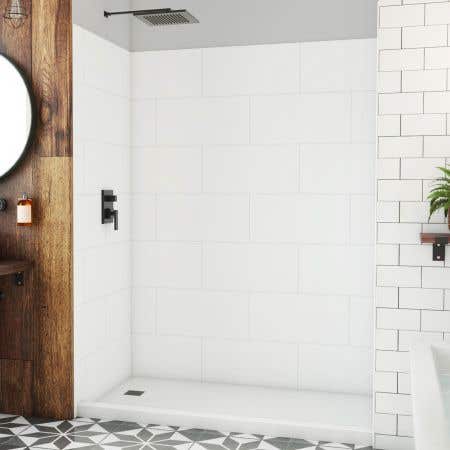
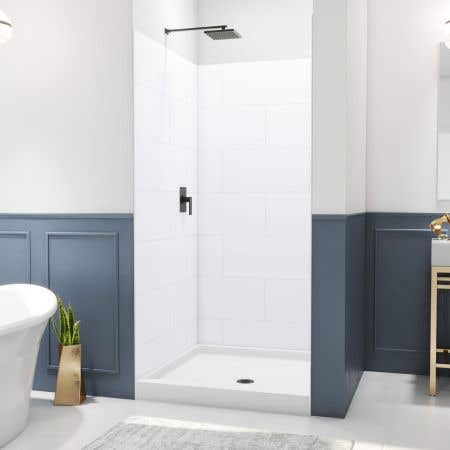
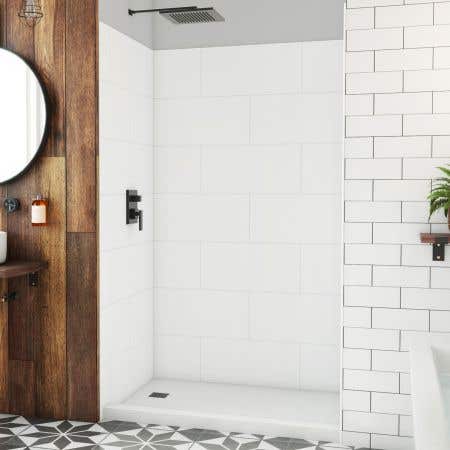
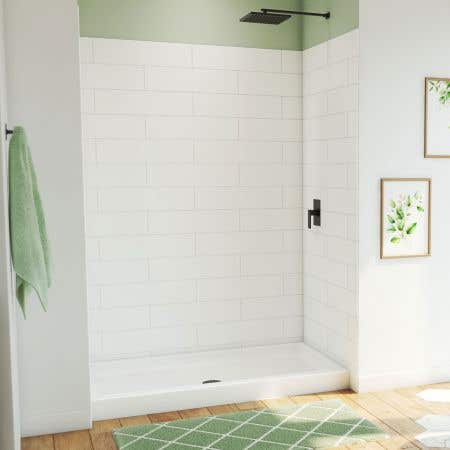
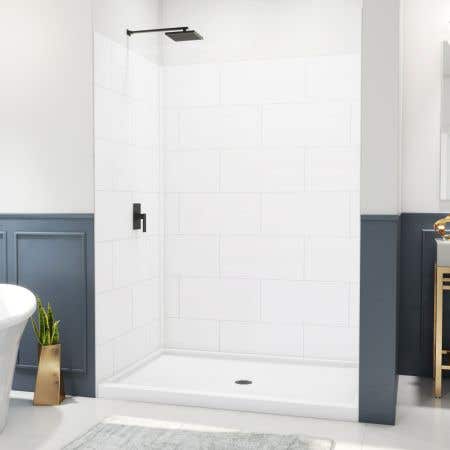
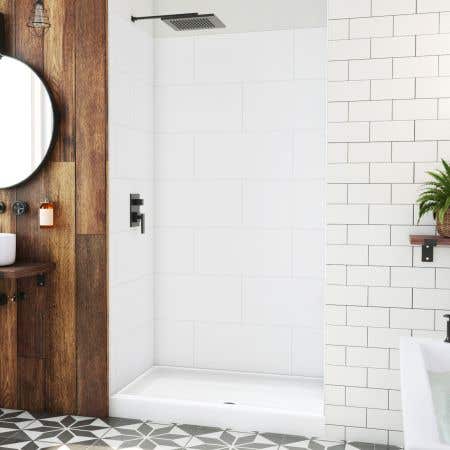
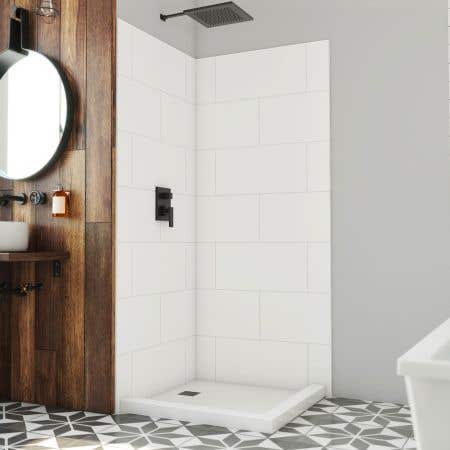
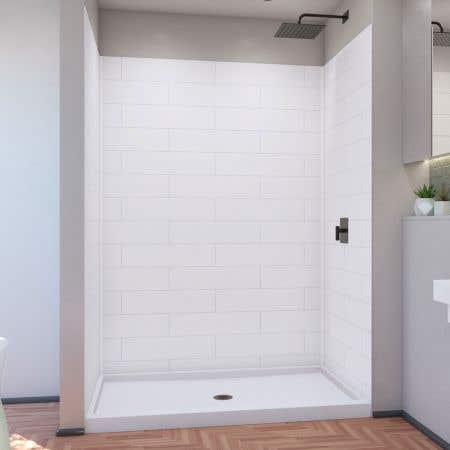
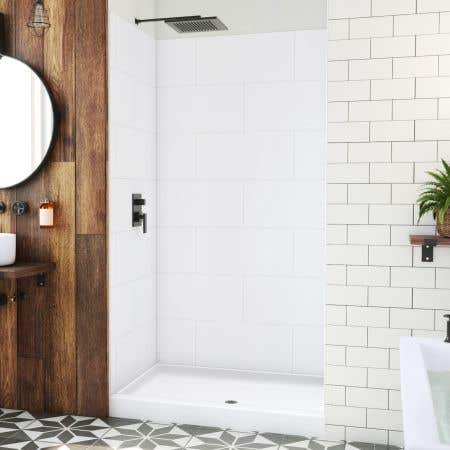
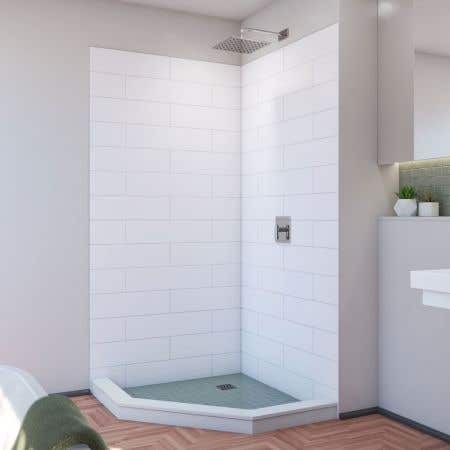
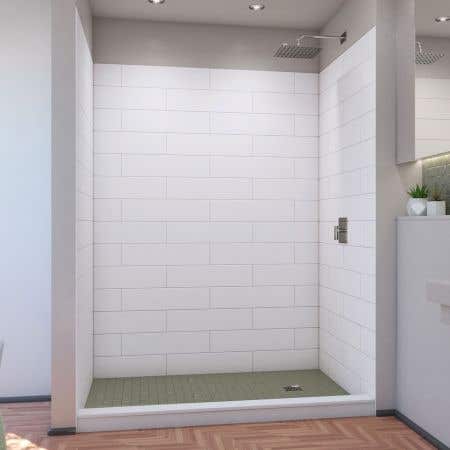
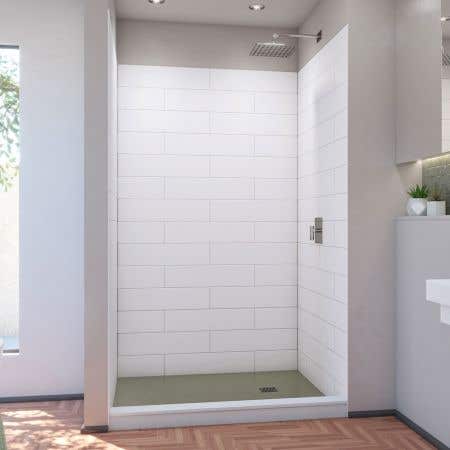
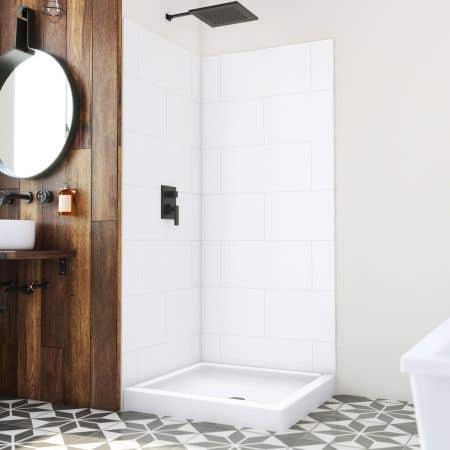
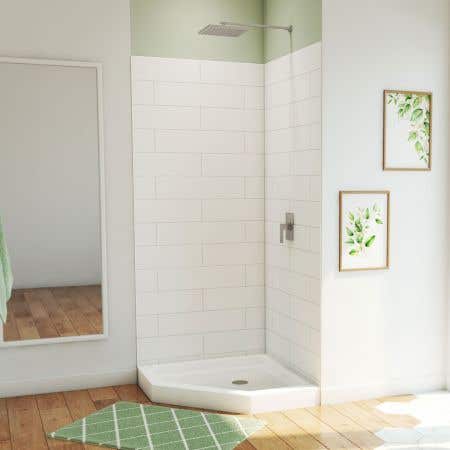
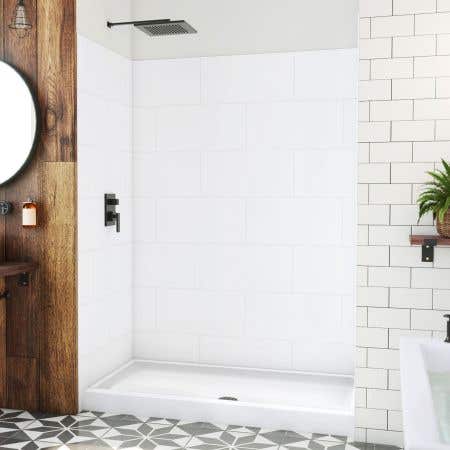
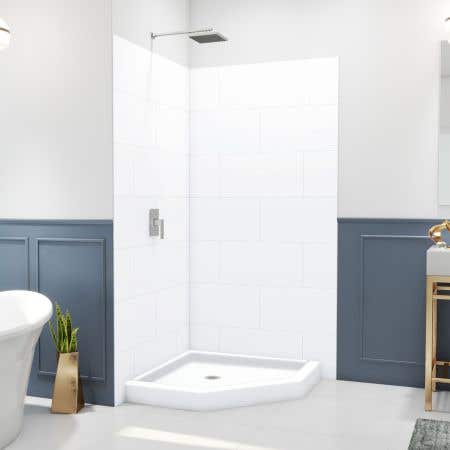
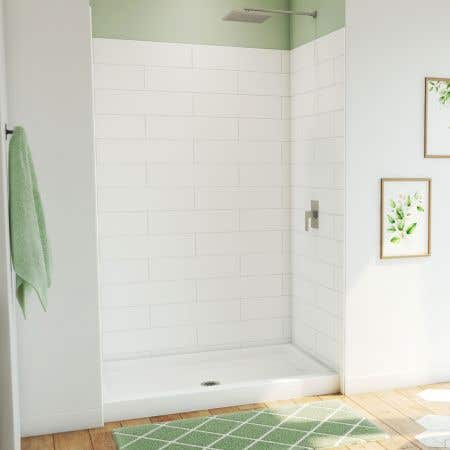
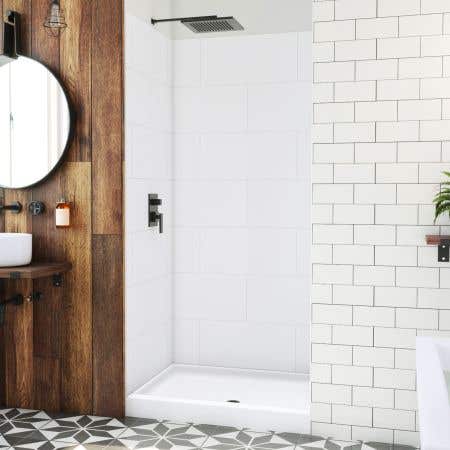
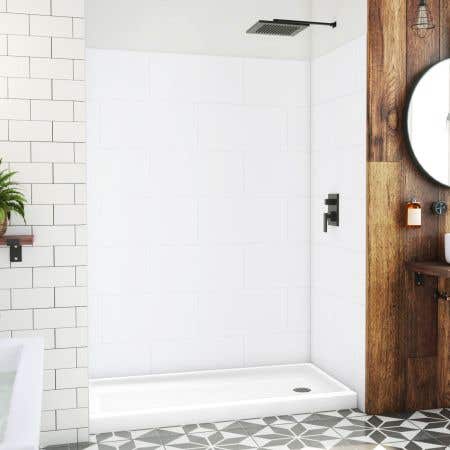
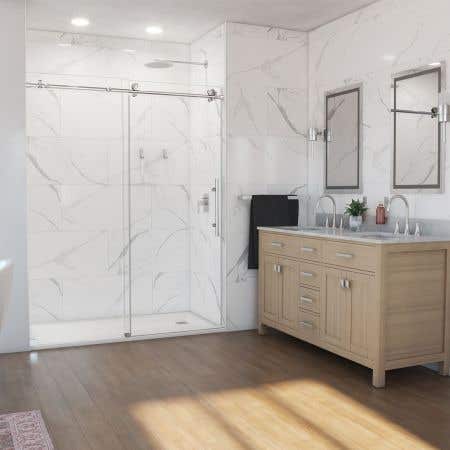
Login and Registration Form